2064- A FORETOLD BIO-CIDE... more
2064 could be the year of an apocalyptic event. This time, however, we are not talking about the prophecy of an ancient civilization and you will not find this date in a passage of the Pentecost Book of Acts. Still, 2064 is the year in which, according to the report of an expert appointed by the Court of Naples in one of several proceedings against the Ecomafia system in Campania, a piece of the world will end. The report says that in 2064 the leachate released by the thousands of tons of toxic and hazardous waste illegally dumped in the countryside or in unauthorized garbage landfills by the Camorra will reach the underground aquifers and consequently extinguish all forms of life in the area, including human life. This is just one of the latest stories related to the toxic waste that has invaded Campania. In that region the disaster cannot be viewed simply as an environmental issue but has become a humanitarian one. Today, thanks to "Gomorrah" (the book by journalist Roberto Saviano that brought worldwide attention to the Ecomafia system in Campania) and to the countless investigations and prosecutions carried out by the Antimafia Commission, we know that, since the 1980s, millions of tons of refuse coming from all over Italy were dumped in legal or illegal landfills in Campania, that is to say in vast portions of that land that the Romans called felix (fertile, since the aquifer in some areas is just 70cm deep), and in quarries managed by the Camorra and by its corrupt business partners. The inquiries carried out by the Antimafia prosecutors in Naples and S. Maria Capua Vetere unveiled a perfectly planned and detailed system, where the Camorra is just one of the main actors. Hidden behind it are corrupt public institutions and colluded businessmen, some of them even linked to the Freemasonry, and the whole game revolves around massive economical interests. According to the latest report issued by the Parliamentary Commission in charge of Ecomafia investigations, what is happening in Campania is a “catastrophe only comparable to the plague of 1600”. It is an unprecedented environmental and humanitarian disaster and, despite the rivers of words spoken and written about it over the years, no concrete action has been taken to confront it. Land reclamation, despite the enormous amount of allocated funds, is almost non-existent. Yet, in 2008 at least 2,550 sites were deemed to be in need of reclamation, all of them situated in the strip of land between Naples and Caserta: twice as many as in Lombardia, Italy’s most industrialized region. According to the former Chairman of the Parliamentary Commission on Ecomafia, Mr Paolo Russo, not even a thousand financial maneuvers disposed by the Government would be sufficient to clean up all of Campania’s polluted areas. The case of the town of Acerra, for instance, is a shocking one: here, animal grazing was forbidden in 2001, when a flock of sheep was found to be intoxicated by a quantity of dioxin exceeding the permitted level by thousands of times. Sheep had started to get sick and give birth to monstrously deformed lambs. The Neapolitan Antimafia prosecutors therefore opened an investigation called “Carosello, Final Act” (jokingly referring to a 1960s TV intermission showing a flock of sheep). The investigation was followed by a trial that lasted over ten years and is finally supposed to reach its conclusion in the next few days (March 2013). It emerged from the inquiry that the Pellini family, businessmen from Acerra managing hazardous waste disposal landfills and composting facilities, took advantage of the connivance of some members of the Carabinieri, of technicians appointed by the local authorities and of affiliates of a notorious Camorra clan from the area of Caserta, and dumped in the countryside of Acerra, Qualiano, Villaricca, Bacoli and Caivano, more than one million tons of refuse coming from northern industries. A lot of this waste was distributed to farmers, telling them it could be used as fertilizer. But the problem is not restricted to the refuse buried underground or spread on top of the soil as fertilizer; it extends to the thousands of tons of industrial, toxic and hazardous waste that, day after day, is burned, especially at night, in the proximity of cultivated fields, under overpasses and in the suburbs of the area between Naples and Caserta. Especially in summer, it is sufficient to follow the so-called median axes (the network of roads linking the provinces of Naples and Caserta) to see distant columns of thick smoke, as black and dense as death. Often these fumes do not even last long enough to report them to the Fire Brigade. Other times, they reach an enormous size and, in summer, with the torrid weather, they spread out and mix with brushwood bonfires. The fumes have no boundaries, they reach a point where they stop growing in height and begin to expand horizontally, spreading for miles and releasing dioxins and other poisons all around the area, over fruit and vegetables orchards as well as in people’s lungs. Innumerable complaints against the toxic fires are posted on the Internet, together with the testimonies of people forced to stay indoors to avoid inhaling the thick, acrid smelling and noxious air. The people involved in this battle often define it a war. And it is true. Walking through the suburbs of my land it’s easy to realize that, for more than thirty years, an authentic war has been perpetrated against us by this criminal powers system. It’s a war that, like every war should be, is fought on three fronts: air, with the fumes of toxic fires; land, with legal and illegal landfills and underground waste deposits, and water, with water purifiers that work badly or not at all and turn miles of beautiful beaches into empty deserts, even in full summer. Still, what is really alarming, what should make it clear that this problem is a humanitarian issue and not just an environmental one, is the result of statistics and medical research. According to a study conducted by the “Pascale” Institute for Cancer Treatment and Research, based in Naples, since 1998 the incidence of tumors among the local population has increased by 45%, whereas in the rest of Italy it is almost unchanged. Today, several scientific studies, often conducted by international researchers, confirm this alarming surge of cancer. But the bad news does not end with cancer. According to some specialists and to scientific studies on the subject, there are other diseases, such as diabetes, respiratory problems, infertility and even autism that appear closely connected with the environmental destruction perpetuated in these lands. Recently, even the Ministry of Health ascertained the fact that in this area people fall ill and die more frequently than in the rest of Italy, while still denying that the cause might be pollution. In fact, according to a statement by the former Minister of Health, Mr Renato Balduzzi, the rise of cancer and other diseases registered in Campania in recent years might be caused by unhealthy lifestyles. Once again Neapolitans are regarded as ugly, dirty and bad! This announcement had the effect of firing the indignation of those who have been fighting for years to denounce this state of affairs. On the other hand, my people, those who fight against this massacre, are aware that not all the blame can be put on the Mafia and on organized criminality. The Government and the local authorities are unanimously regarded as accomplices, since polluted areas get confiscated but no one bothers removing the ashes of the toxic fires and the repeatedly promised reclamations, that several million Euros have already been allocated for, never start due to cumbersome bureaucracy. This is why, in the summer of 2012, the environmental associations converged in a coordinated group, the Fires Committees Organization (and I am honored to be a part of it), and filed a formal complaint against Regione Campania, the provincial authorities of Naples and Caserta, including the Municipality of Naples, and 45 more municipalities set in the area between the two towns. A few months later, Padre Maurizio Patriciello, minister of a church set in a working class neighborhood of Caivano, province of Naples, a priest who has always been on the frontline against the Camorra, decided to join our battle. Padre Maurizio has had enough of seeing the black smoke of burning toxic waste hanging over the suburban tenements where the people of his parish live. Padre Maurizio has had enough of celebrating funerals for victims of cancer, whether young or old. He writes as a columnist for an important national newspaper and continuously reports about the situation on the main Social Networks. Eventually, he succeeded in stirring people’s conscience and, one evening, despite the rain, he managed to bring about 20,000 people out in the street, each of them with a torch in one hand and the photo of a loved one who died from cancer in the other. Awareness is a growing in a population that, until now, has often remained silent. People who reside in the area know that, here, the majority of deaths are caused by cancer. At times, they seem almost afraid to pronounce the word: they often refer to it as "that nasty illness" "that disease." Everyone knows that the disease is affecting people who are increasingly younger, people in pre-screening age: for them National Health does not even provide prevention. That is why they feel totally outraged when they get told that, probably, all those deaths are due to unhealthy lifestyle. What’s more, in these areas, after all the reports on crops confiscated due to contamination by toxic substances, people are afraid of eating the fruit and vegetables that doctors advise us to eat to diminish the risk of developing tumors. Over a year has passed since I started getting involved in the matter as a photographer. Recently, I have started to feel seriously depressed. I also feel very angry because these are my land and my people. What’s more, my own life is in danger. At times, though, I feel strangely guilty. How could I let it happen? How could the generations before me let it all happen? Where were we? What have we done? What kind of people did we delegate to represent us, all through these years? Who protected us, who was supposed to do it? But, most importantly, what heritage are we going to leave to our children and grandchildren? Out of this sense of guilt, shared with all the wonderful people I have met in the course of this work and battle, this project was born. Regrettably, my camera cannot make you feel the acrid and nauseous smell that lingers in the summer nights, when a toxic fire burns or when the wind blows towards the suburbs the vapors exhaled by putrid waste storage sites or by the countless illegal landfills that proliferate around the countryside. Sadly, I cannot show you with my camera what has been buried underground or inside the caves managed by the Camorra. But you will be able to see the toxic fires, their smoke, their ashes. You will see Rom gypsy children playing right next to the noxious fumes rising from a villa, first confiscated to the Mafia but then used as a furnace to burn waste and plastics of all sorts. You will see a flock of sheep grazing under a bridge in an area polluted by refuse of all sorts, including asbestos. And, finally, you will see the faces of people who suffer, or have suffered, immeasurable damage but still tell their dramatic story, to carry on denouncing, to raise awareness and fight. Each of these people go on fighting despite the enemy that has invaded their homes or even their own body and bears a name so hard to pronounce. They continue to struggle despite cancer, that here takes the form of an epidemic and spares no street, no neighborhood and no social class. They told me their stories with great dignity, although this criminal system has robbed them of a child, a wife, a husband, a brother, a parent or a close friend: dramatic deaths that in some cases took place just a few weeks before I met them. They do it out of love for their land and to spare from this tragedy the future generations. Around here, activists and environmentalists often repeat this: “We are contaminated. If we fight, we do it for our children and grandchildren.” Yes, for our children and grandchildren because 2064, symbolic or real as it may be, sooner or later is bound to come.
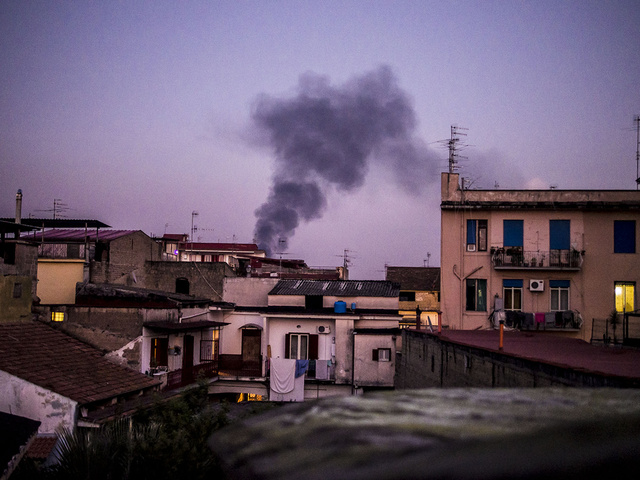
1-Toxic smoke near households.
Caivano (Province of Naples) - 25 november 2012- A toxic fire seen from the photographer’s balcony. In the so called “Land of Fires”, that includes a vast territory between the provinces of Naples and Caserta, on country roads and under flyovers, every day dozens of fires are lit by criminals often linked to the local Mafia, in order to dispose of tons of industrial and toxic waste. The toxic fumes release huge amounts of carcinogenic dioxins that are deposited on cultivated land as well as in the lungs of the inhabitants of the suburbs. Especially in the summer, these fires render the air acrid and unbreathable, forcing the resident population to keep their doors and windows firmly shut.
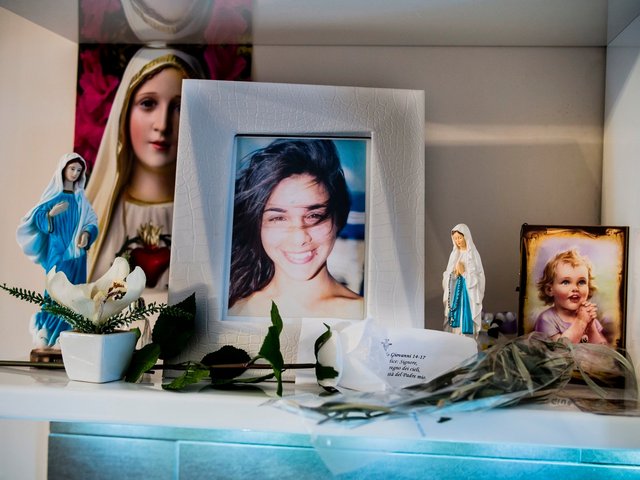
2. Tina cancer victim
Caivano (province of Naples))- 27- marzo 2013- A photograph of Tina, who died at 28 for a sudden tumor, between other pictures and religious images, in her parent’s home.
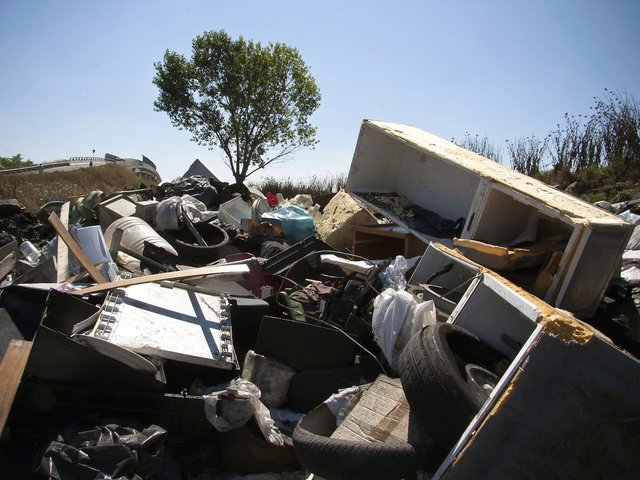
3. Afragola
Afragola (province of Naples)
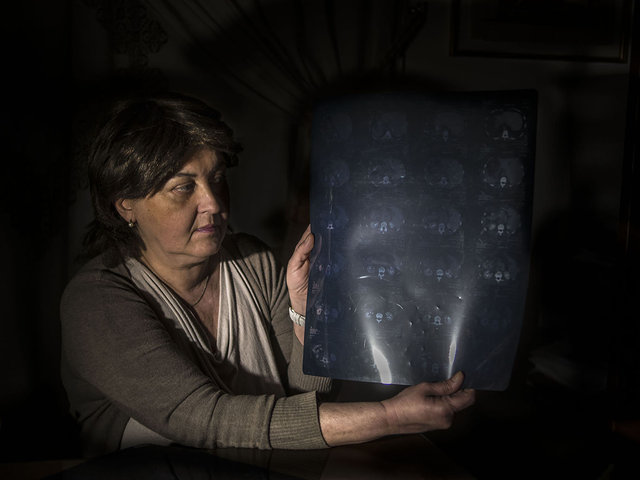
4.Luisa, cancer victim
Luisa abitava in un quartiere vicino ad una discarica di Stato dove per anni la camorra ha sversato rifiuti tossici e si è ammalata di un gravissimo e rarissimo tumore al fegato. E' morta pochi mesi dopo aver posato per questa foto.
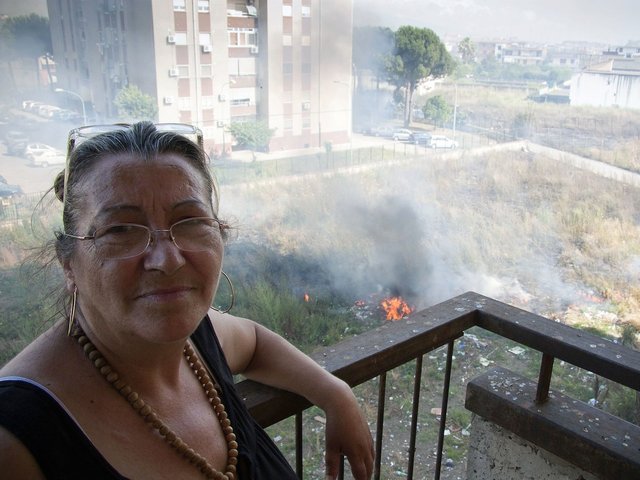
6.
Crispano (Province of Naples) - July, 15 2012-An elderly woman, whose husband is sick and suffering from severe respiratory problems, is portrayed on the balcony of her home while a toxic fire burns on the street right below. Especially in the summer, these fires render the air acrid and unbreathable, forcing the resident population to keep their doors and windows firmly shut.

7
Caivano (Province of Naples) - February, 18 2012- A fireman engaged in smothering the fire set to urban and toxic waste. In the so-called Land of Fires one just needs to comb through the File Brigade’s archives, where the countless calls received to extinguish toxic fires are filed, to realize the size of the phenomenon. For many years, both the Camorra and small business companies who operate illegally and have to dispose of their refuse in the same manner, have been igniting these fires to get rid of hazardous and toxic waste of any sort.
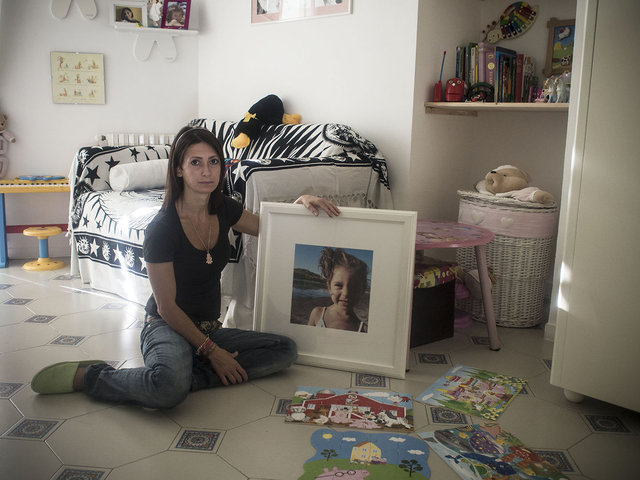
8 Luisa e Alice
Luisa, posa con la foto della figlia Alice, morta a soli 7 anni per un tumore causato dall'inquinamento. Luisa, insieme ad altre mamme colpite dalla stessa tragedia, ha deciso di posare per delle foto scattate tutte nelle camere dei figli morti per tumore che sono diventate cartoline che le associazioni ambientaliste e i cittadini comuni ella Campania hanno inviato in massa al Papa e al Presidente della Repubblica Italiana.
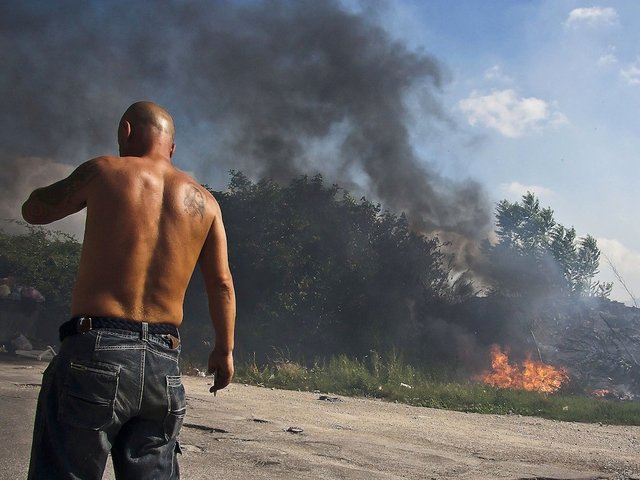
9
Crispano, (Province of Naples) - July, 30 2012- This vast toxic fire, lit in a private field in the near proximity of people’s homes, has been blown by the hot winds and has reached the adjacent vegetation. The toxic fumes release huge amounts of carcinogenic dioxins that are deposited on cultivated land as well as in the lungs of the inhabitants of the suburbs. Especially in the summer, these fires render the air acrid and unbreathable, forcing the resident population to keep their doors and windows firmly shut.
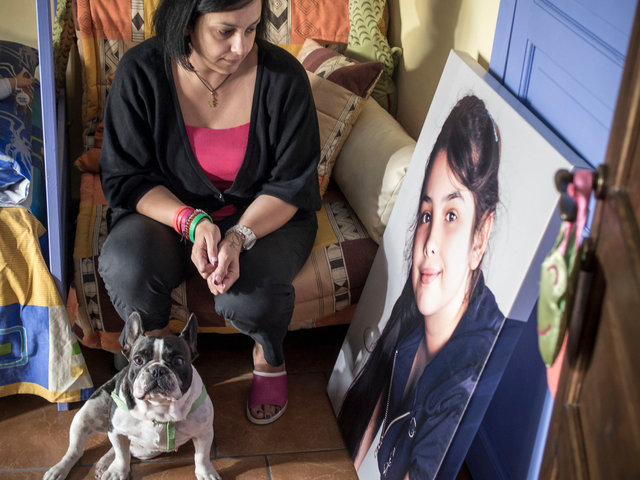
10. Tina e Dalia
Tina, posa con la foto della figlia Dalia, morta a soli 13 anni per un tumore causato dall'inquinamento. Tina, insieme ad altre mamme colpite dalla stessa tragedia, ha deciso di posare per delle foto scattate tutte nelle camere dei figli morti per tumore che sono diventate cartoline che le associazioni ambientaliste e i cittadini comuni ella Campania hanno inviato in massa al Papa e al Presidente della Repubblica Italiana.
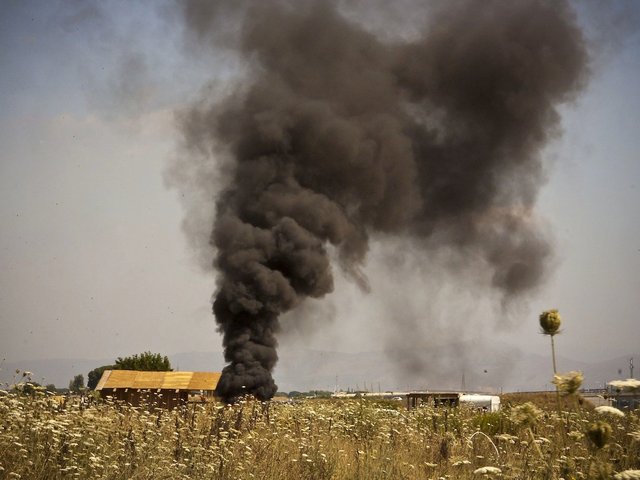
11
Afragola, (Province of Naples) - July, 14 2012-A column of dense black smoke rises from a hazardous and industrial waste mound, dumped in an open field where the children belonging to a local Rom gypsies community usually go to play.The toxic fires fumes release huge amounts of carcinogenic dioxins, extremely dangerous for human health. Several scientific researches, including a recent study conducted by the “Pascale” Institute for Cancer Treatment and Research, based in Naples, show that cancer incidence among the population of Naples and Caserta provinces has increased by 50%. The same Rom gypsy communities whose members are hired by criminal organizations to light the toxic fires in exchange of a handful of euros, often pay the worst consequences of pollution.
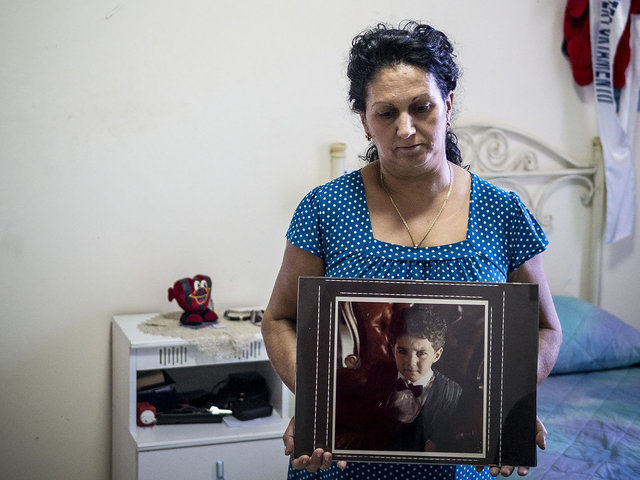
12.Maria e Francesco
Maria, posa con la foto del figlio Francesco, morto a soli 14 anni per un tumore causato dall'inquinamento. Maria, insieme ad altre mamme colpite dalla stessa tragedia, ha deciso di posare per delle foto scattate tutte nelle camere dei figli morti per tumore che sono diventate cartoline che le associazioni ambientaliste e i cittadini comuni ella Campania hanno inviato in massa al Papa e al Presidente della Repubblica Italiana.
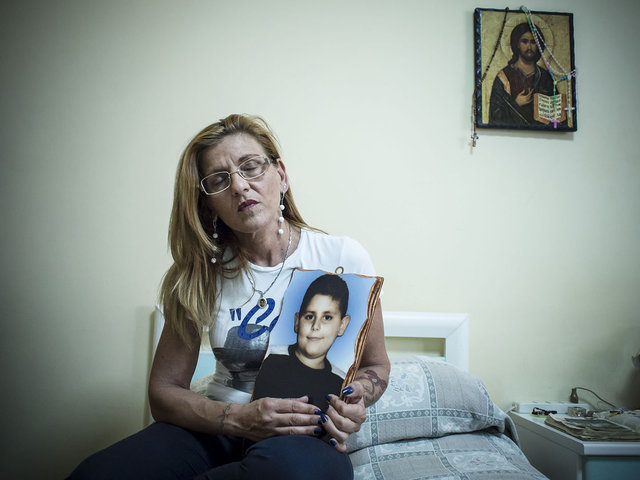
14.Tina e Antonio
Tina, posa con la foto del figlio Francesco, morto a soli 9 anni di un raro tumore causato dall'inquinamento. Tina, insieme ad altre mamme colpite dalla stessa tragedia, ha deciso di posare per delle foto scattate tutte nelle camere dei figli morti per tumore che sono diventate cartoline che le associazioni ambientaliste e i cittadini comuni ella Campania hanno inviato in massa al Papa e al Presidente della Repubblica Italiana.
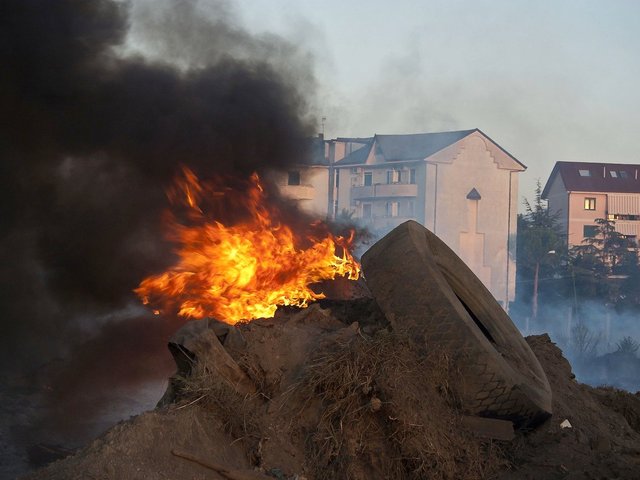
15
Crispano, (Province of Naples) - July, 30 2012- This vast toxic fire, lit in a private field in the near proximity of people’s homes, has been blown by the hot winds and has reached the adjacent vegetation. The toxic fumes release huge amounts of carcinogenic dioxins that are deposited on cultivated land as well as in the lungs of the inhabitants of the suburbs. Especially in the summer, these fires render the air acrid and unbreathable, forcing the resident population to keep their doors and windows firmly shut.
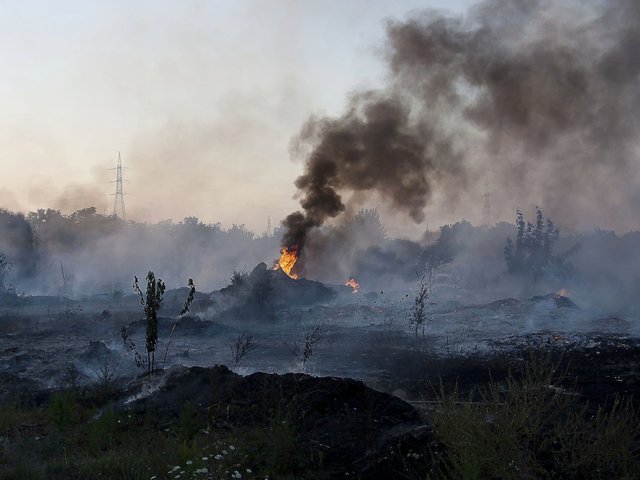
17
Crispano, (Province of Naples) - July, 30 2012- This vast toxic fire, lit in a private field in the near proximity of people’s homes, has been blown by the hot winds and has reached the adjacent vegetation. The toxic fumes release huge amounts of carcinogenic dioxins that are deposited on cultivated land as well as in the lungs of the inhabitants of the suburbs. Especially in the summer, these fires render the air acrid and unbreathable, forcing the resident population to keep their doors and windows firmly shut.
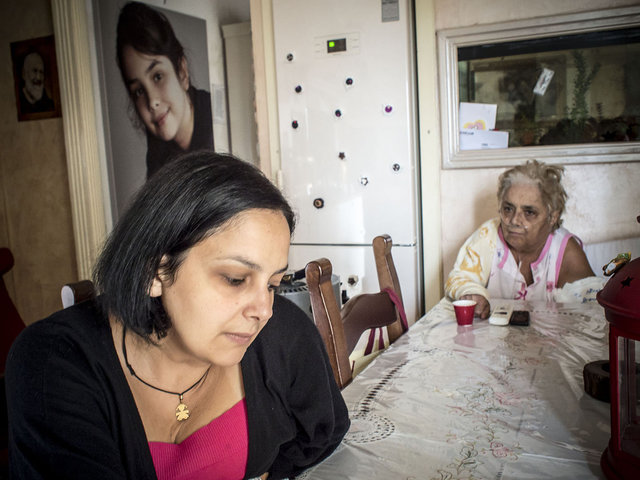
18.Tina e Alice 2
Tina, la mamma di Dalia, morta a soli 13 anni per un tumore legato all'inquinamento.
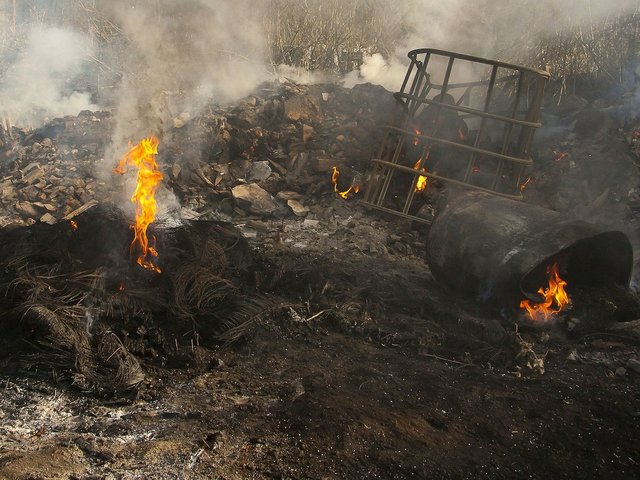
19.
Caivano, (Province of Naples) - July, 30- 2012- Detail of burning industrial and toxic waste.
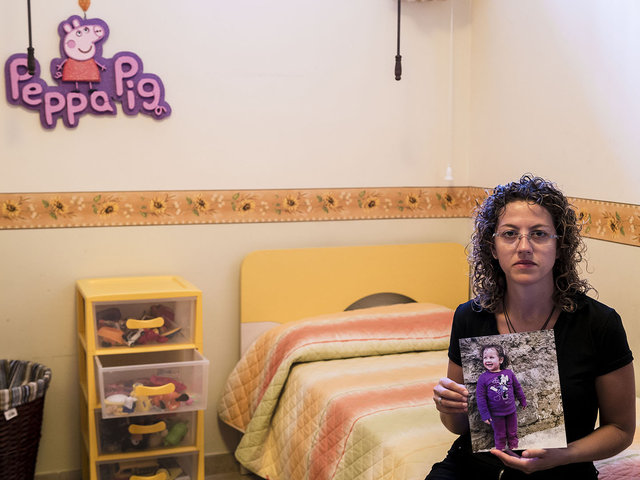
20. Imma e Mesia
Imma, posa con la foto della figlia Mesia, morta a soli 4 anni per un tumore causato dall'inquinamento. Imma, insieme ad altre mamme colpite dalla stessa tragedia, ha deciso di posare per delle foto scattate tutte nelle camere dei figli morti per tumore che sono diventate cartoline che le associazioni ambientaliste e i cittadini comuni ella Campania hanno inviato in massa al Papa e al Presidente della Repubblica Italiana.
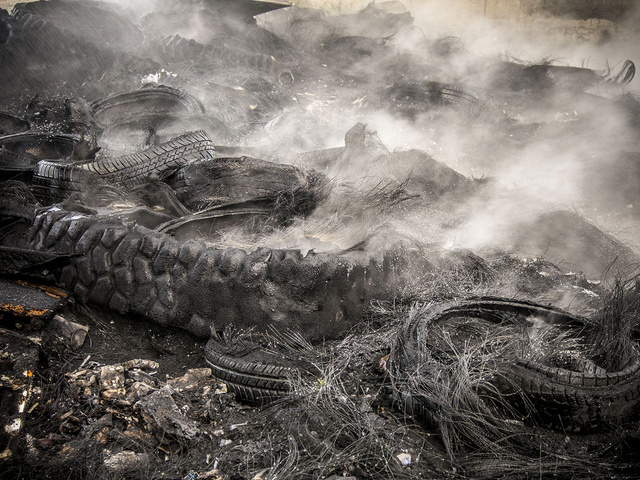
21.Piles of burnt truck tires.
The tires are the emblem of burning toxic. Are used as material to facilitate combustion and emit massive amounts of dioxins.
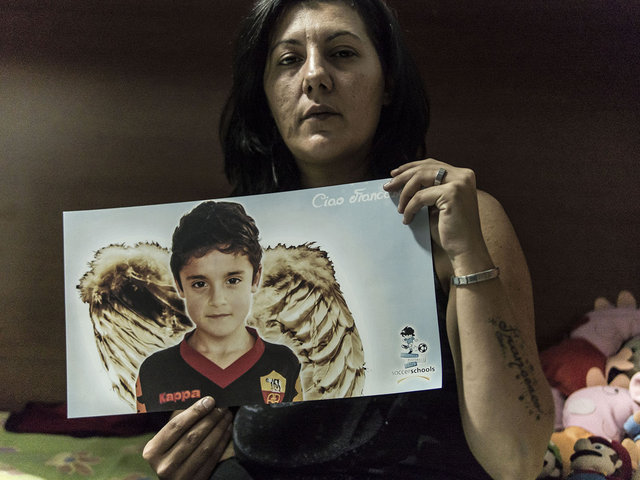
22.Raffaella e Francesco
Raffaella, posa con la foto del figlio Francesco, morto a soli 9 anni per un tumore causato dall'inquinamento. Raffaella, insieme ad altre mamme colpite dalla stessa tragedia, ha deciso di posare per delle foto scattate tutte nelle camere dei figli morti per tumore che sono diventate cartoline che le associazioni ambientaliste e i cittadini comuni ella Campania hanno inviato in massa al Papa e al Presidente della Repubblica Italiana.
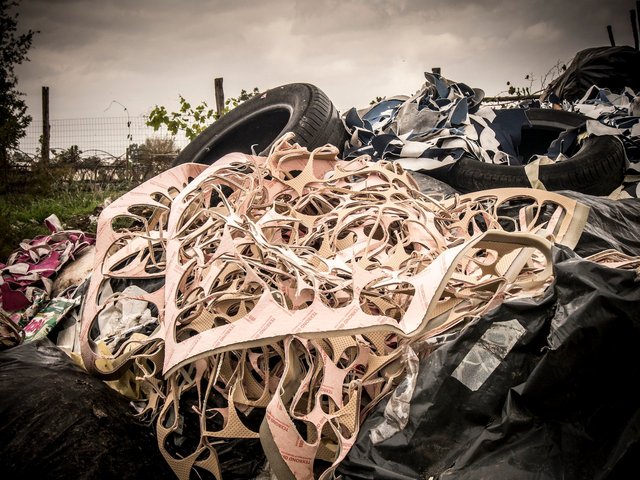
23
Caivano (Province of Naples) - November,5, 2011- Detail of an illegal landfill regularly set on fire. In this case, leftover waste from shoes manufacturing is clearly visible, as well as the usual tyres employed to keep combustion temperatures high and prevent the fire from dying too soon. Once the landfill is full to the brim, it gets set on fire in order to destroy any evidence and make room for new loads of refuse. In the province of Naples there are hundreds of small illegal factories producing shoes or clothing and the “fake brands” market mainly derives from such manufacturers. The illegitimate factories, breaking market rules and evading taxes, cannot dispose of their waste legally and therefore get rid of it by dumping it in the countryside and paying some thug to set it on fire.
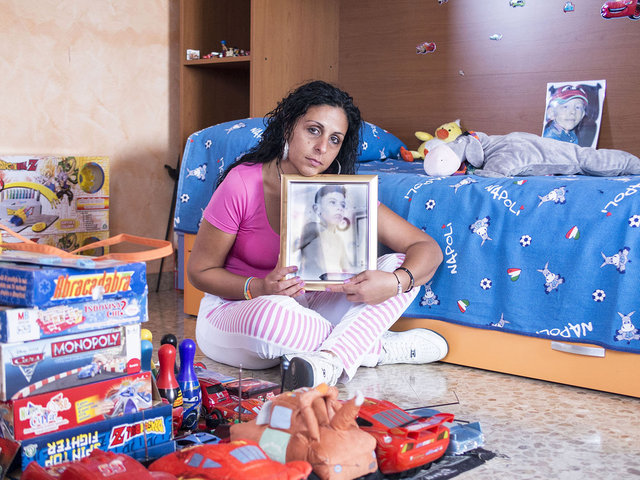
24Antonella e Francesco
Antonella, posa con la foto del figlio Francesco morto a soli 8 anni per un tumore causato dall'inquinamento. Antonella, insieme ad altre mamme colpite dalla stessa tragedia, ha deciso di posare per delle foto scattate tutte nelle camere dei figli morti per tumore che sono diventate cartoline che le associazioni ambientaliste e i cittadini comuni ella Campania hanno inviato in massa al Papa e al Presidente della Repubblica Italiana.
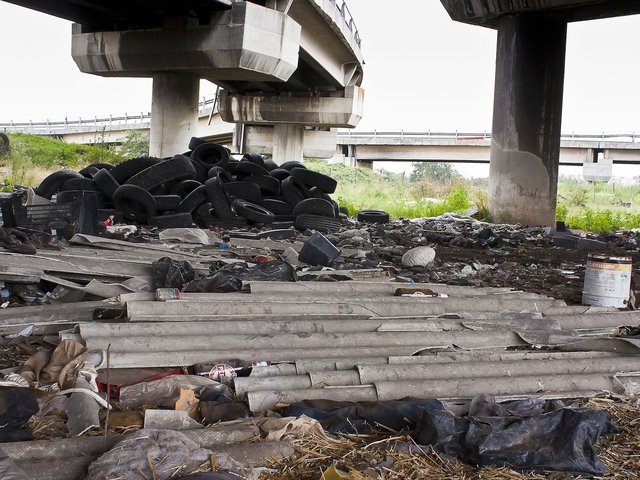
25
Orta di Atella (Province of Caserta) - November, 19, 2012- Piles of tyres and slabs of asbestos dumped, together with toxic waste of all sorts, under one of the many flyovers of the suburban areas. In Italy, asbestos was banned in 1992: its tiny particles, when inhaled, can cause lethal diseases like mesothelioma, asbestosis and lung cancer. In these areas, many asbestos industrial products can still be found, but both privates and small illegal business companies carry on dispersing it in illicit dumps to avoid paying the high cost of legal disposal.
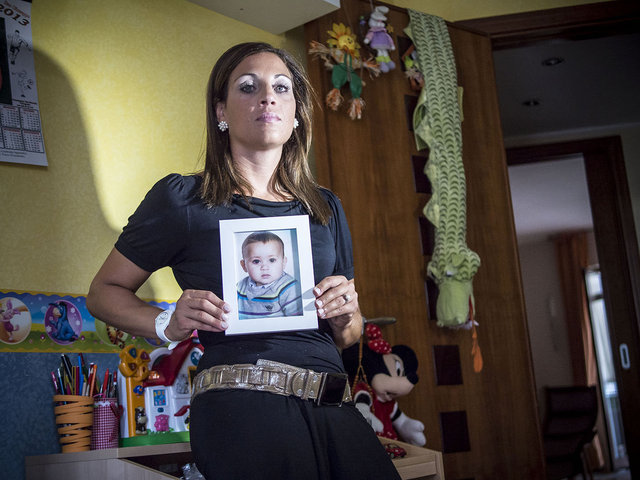
26. Anna e Riccardo
Anna, posa con la foto del figlio Riccardo, morto a soli 22 mesi per un tumore causato dall'inquinamento. Anna, insieme ad altre mamme colpite dalla stessa tragedia, ha deciso di posare per delle foto scattate tutte nelle camere dei figli morti per tumore che sono diventate cartoline che le associazioni ambientaliste e i cittadini comuni ella Campania hanno inviato in massa al Papa e al Presidente della Repubblica Italiana.
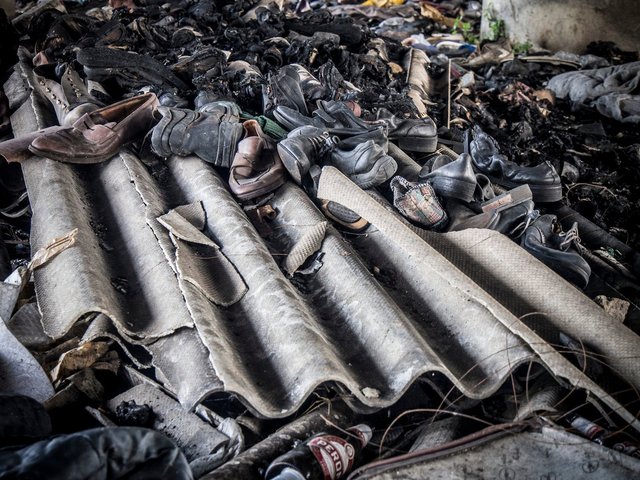
27
Orta di Atella (Province of Caserta) - November, 5, 2012- Piles of tyres and slabs of asbestos dumped, together with toxic waste of all sorts, under one of the many flyovers of the suburban areas. In Italy, asbestos was banned in 1992: its tiny particles, when inhaled, can cause lethal diseases like mesothelioma, asbestosis and lung cancer. In these areas, many asbestos industrial products can still be found, but both privates and small illegal business companies carry on dispersing it in illicit dumps to avoid paying the high cost of legal disposal.
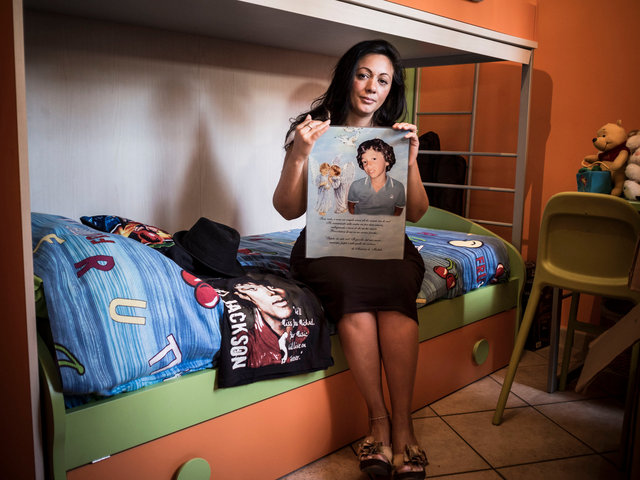
28. Marzia e Antonio
Marzia, posa con la foto della figllio Antonio, morto a soli 9 anni per un tumore causato dall'inquinamento. Tina, insieme ad altre mamme colpite dalla stessa tragedia, ha deciso di posare per delle foto scattate tutte nelle camere dei figli morti per tumore che sono diventate cartoline che le associazioni ambientaliste e i cittadini comuni ella Campania hanno inviato in massa al Papa e al Presidente della Repubblica Italiana.

29.Piles of burnt truck tires.
Afragola, (Province of Naples) - November, 17 2012- A Fire Brigade squad is busy putting out a fire lit under the overpass of a provincial road in order to burn hazardous and toxic waste. Tyres are the symbol of the Land of Fires: they get burnt to be disposed of as well as to provide high combustion temperatures and help to camouflage and destroy other more dangerous types of refuse.
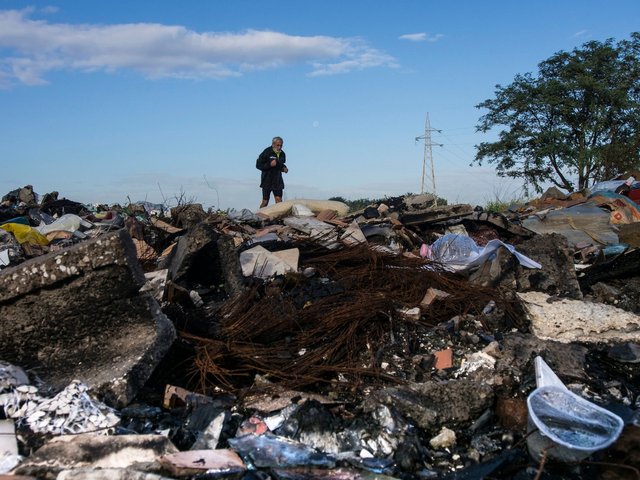
31.
Caivano (Province of Naples) - November, 2, 2012- A man is jogging along a country road littered with hazardous waste. Most suburban areas do not provide adequate space for outdoor sport activities and country roads are the only alternative, although they might be in such conditions. The local athletic team repeatedly protested against the recent Ministry of Health study that claimed that the increase of cancer cases in the provinces of Naples and Caserta might be the result of “unhealthy lifestyles”, denying once again the connection between environmental pollution and its effects on human health.
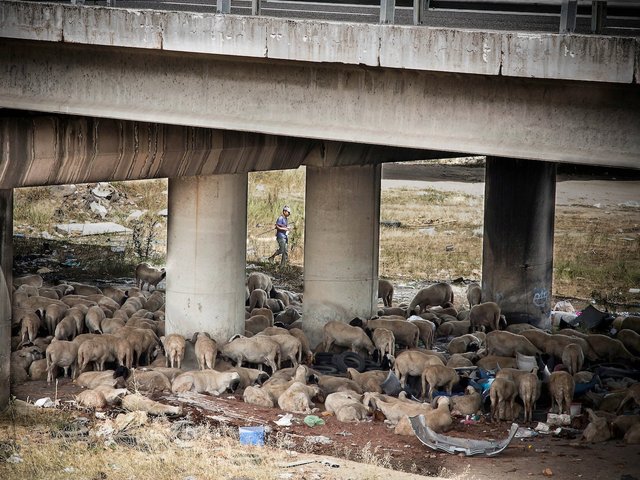
34.
Caivano (Province of Naples) – August, 6, 2012- A flock of sheep grazing under an overpass: toxic waste of various kinds, including asbestos, has been dumped in the location. A few kilometres further, near Acerra, animal grazing is forbidden because toxic and carcinogenic substances contaminate the soil.
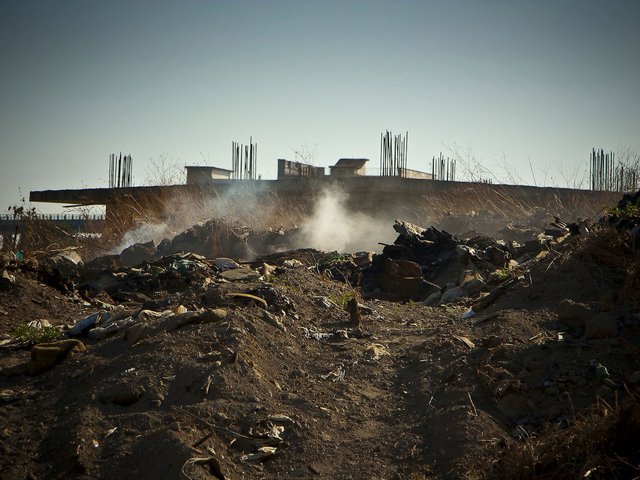
36
Casoria (Province of Naples) - August, 25, 2012- The temporary waste storage site of Cantariello releasing noxious fumes. Cantariello was used as a temporary landfill for urban refuse during the many “garbage crisis” that occurred in Naples in the past, when municipal waste literally invaded the city. The landfill is not equipped with any collecting system for leachate or biogas and, most probably, toxic and industrial waste was also surreptitiously dumped in it. All around the area there are orchards, fields and suburban tenements where people are forced to live with the foul smell and, probably, breathe toxic air.
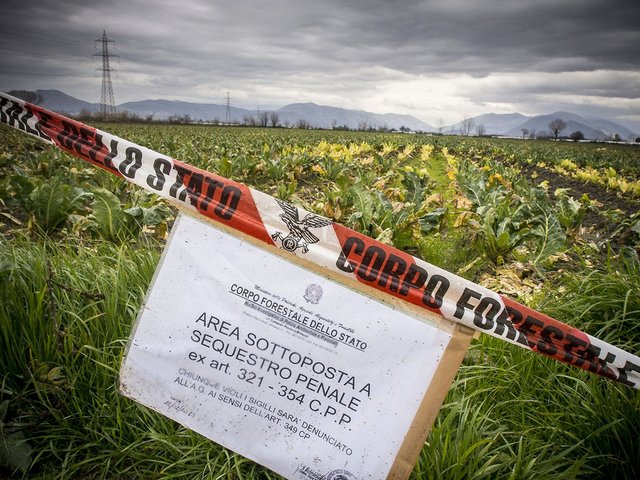
38
Caivano (Province of Naples) – February, 23, 2013-
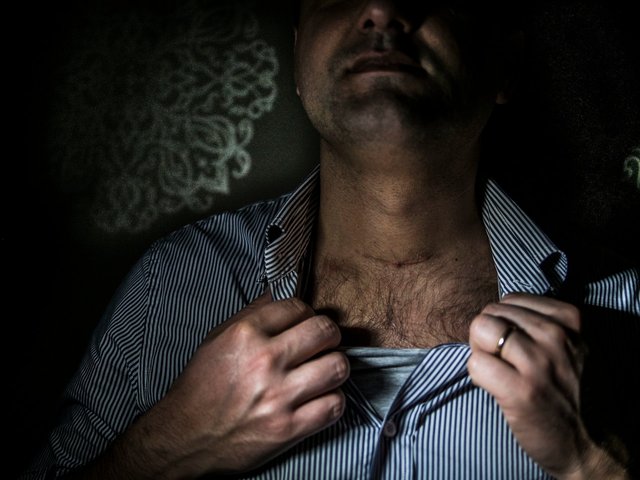
40
Cardito, (Province of Naples) - January,13, 2013- Tonino, aged 37, shows the scar of his thyroid cancer operation. According to local doctors thyroid cancer incidence has seen an amazing increment in the provinces of Naples and Caserta, and it affects the population at an increasingly younger age. It is stated by researchers that thyroid diseases are an important warning signal of the negative effect of pollution on human health. Tonino has a little child and he often says he would like to take his son away from this wretched land.
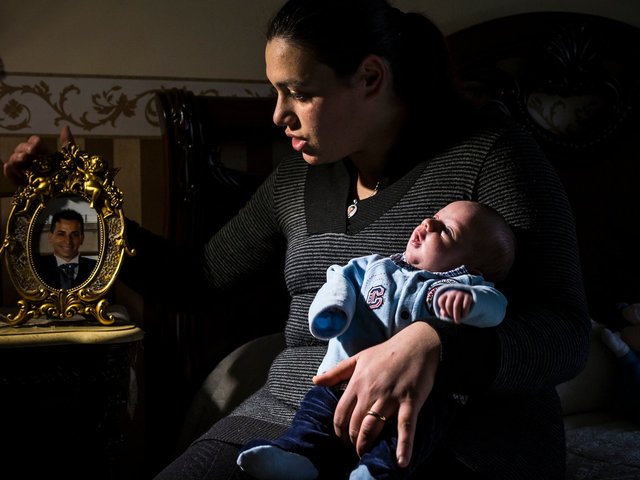
41
Caivano (Province of Naples) - January, 11, 2013- Agostino’s wife, Roberta, next to a photo of her husband, who died a few months before the birth of their first child. Agostino lived right in the middle of the toxic fires area, and often his windows had to be shut to keep out the acrid stench of the noxious fumes. Roberta called her son Agostino, to honour the memory of her husband. Still, despite her sorrow, she talks about her story and fights to demand a solution to this dramatic problem and to guarantee a better future for little Agostino and all the children living in the area.
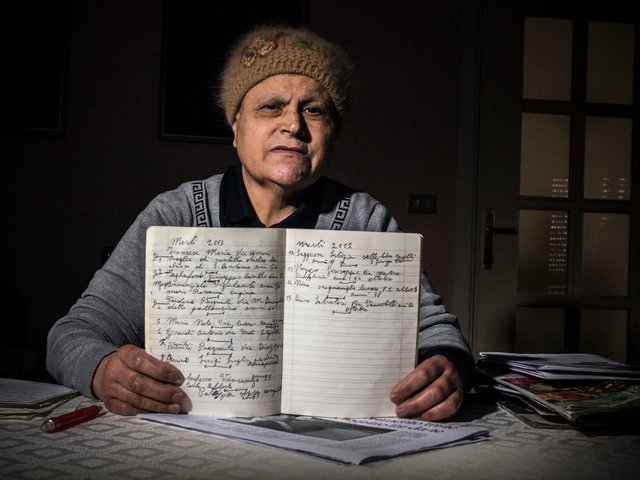
42
Terzigno (Province of Naples) - February, 1, 2013- Rosa, affected by cancer and seen as a heroine by the inhabitants of the small towns near Vesuvius, shows a copybook where she recorded the names of all the people in her district that got ill or died of cancer during the last few years (the 2012 listing is visible in the photo). After finding out about her disease, and chemotherapy permitting, Rosa started going through every household and discovered that most of the people affected by tumor lived in her district, an area close to the Vesuvius National Park where several caves are used as illegal waste dumps.
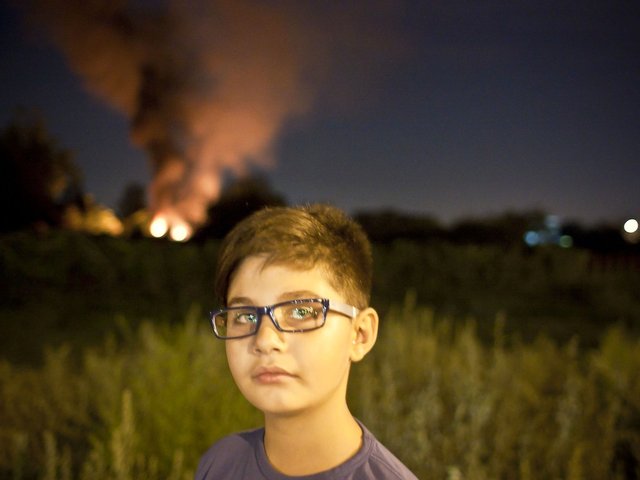
43
Cardito, (Province of Naples) -September, 17 2012- The young child of one of the environmental activists living in the area portrayed by night next to a toxic fire burning not far from his home.
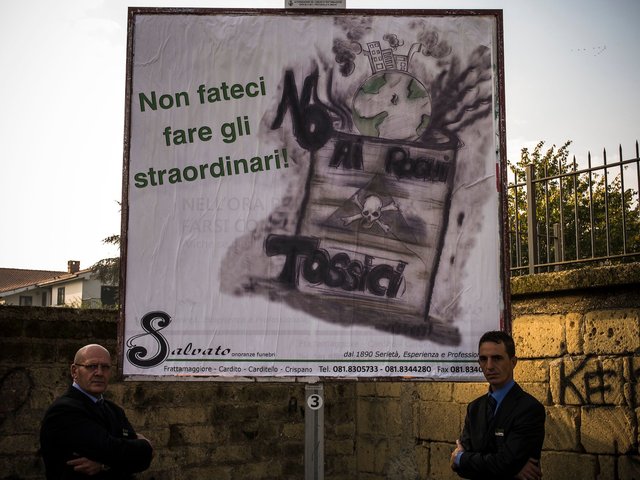
44
Frattamaggiore (Province of Naples) - November, 25, 2012- Two employees of a local undertaker pose next to a peculiar advertisement claim (No toxic fires. Do not make me do overtime) that perfectly sums up the daily tragedy people are living in these surroundings. According to the owner of the burial service firm, in the last twenty years most deaths in his area have been caused by cancer, affecting people at an increasingly younger age.
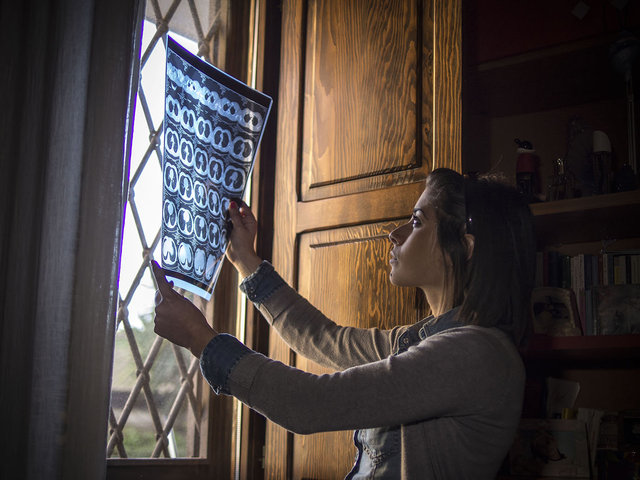
46
Caivano (province of Naples)-April,10,2013- Elisabetta, aged 22, in treatment for a thyroid tumor; her mother Giovanna, in treatment for a thyroid disease; her aunt, who is under therapy for breast cancer, and her grandmother, holding the photo of her son, Elisabetta’s uncle, who died ate the age of 30 because of a brain tumor. In this area cancer often affects whole families and at an increasingly younger age.

47
Acerra (Province of Naples) - February, 13, 2012- Michele, 36 year old, suffers from colorectal and lung cancer. Michele is a farmer from Acerra. For years he grew, and ate himself, the products of fields where, according to the Naples Antimafia prosecutors, toxic waste of any kind was dumped and burnt. According to the investigations, in some cases toxic refuse coming from northern Italy factories was sold to the farmers as fertilizer and therefore spread on the soil. Nowadays Michele fights for his life and for the cause, following the proceedings against the criminals who poisoned his people and asking for justice.
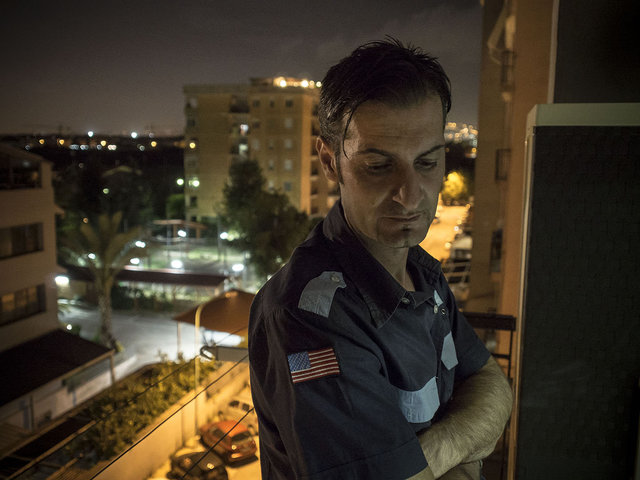
49.
Daniele ha perso il figlio Franceso a soli 8 anni a causa di un tumore molto probabilmente legato all'inquinamento della zona. Da quel balcone, ogni giorno e ogni notte, Daniele vede i fumi dei roghi tossici. Daniele ha deciso di raccontare la propria storia insieme alla moglie Raffaella per denunciare lo scempio ambientale perpetuato dalle ecomafie nella zona tra Napoli e Caserta.
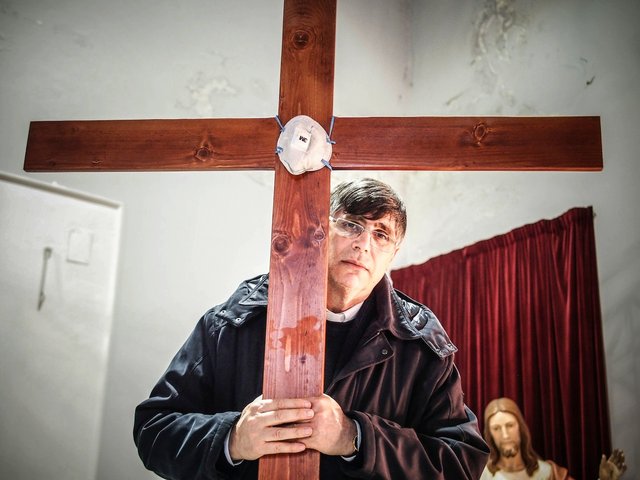
51.
Caivano, (Province of Naples) - March 2013Padre Maurizio Patricello is holding the cross on which he has put a filtering mask in sign of protest against the toxic fires. In this area, Padre Maurizio is seen as a guide and a symbol of the environmental battle against the toxic fires and the illegal dumps. His parish is set in a populated suburban settlement of Caivano, where toxic fires are often detected and where people are forced to keep doors and windows shut most of the time. Padre Maurizio Patricello has had enough of celebrating funerals for the victims of cancer and leukaemia.
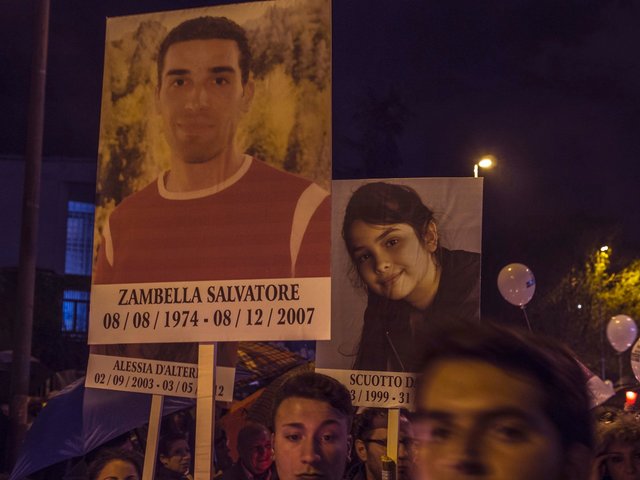
52
Fiaccolata per i morti di cancro e leucemia
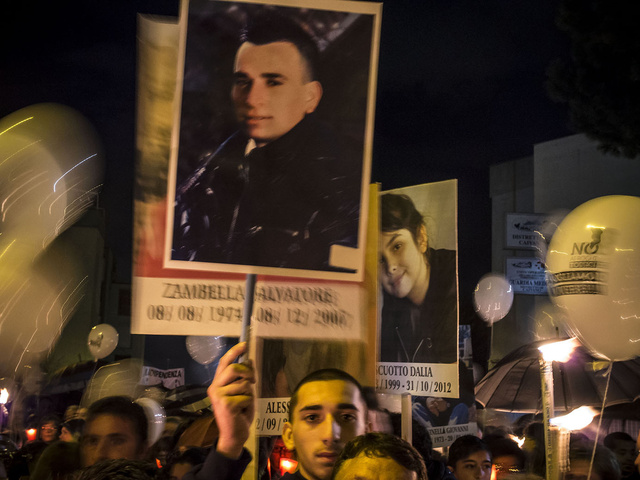
53. Caivano, Italy. Fiaccolata in onore delle vittime di cancro e di leucemia
Caivano (Province of Naples) - November, 18, 2012- The brother of Agostino, who died at 30 for a sudden lung tumor, joined the march organised by Padre Maurizio Patricello to commemorate the victims of toxic waste pollution. Agostino would have liked to participate in the event, since it was his wish to join the fight, but he died two days before the march, leaving his young wife, Roberta, pregnant with their first child.
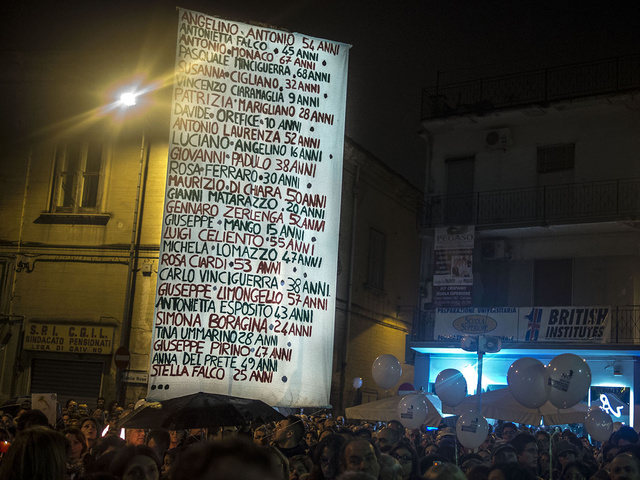
54.Caivano, Italy. Fiaccolata in onore delle vittime di cancro e di leucemia
Caivano (Province of Naples) - November, 18, 2012- A banner listing the names of the people who died of cancer in Caivano in the last few years, shown during the torchlight march organised to commemorate all the cancer and leukaemia victims deceased in the provinces of Naples and Caserta.

55.Casal di Principe- contro le Ecomafie
28/09/2013. Non si contano più le manifestazioni contro le ecomafie nei territori a nord di Napoli e a sud di Caserta. L'ultima si è svolta a Casal di Principe. Qui la gente resiste e scende in strada contro la camorra e gli apparati deviati dello Stato che hanno permesso il biocidio campano.
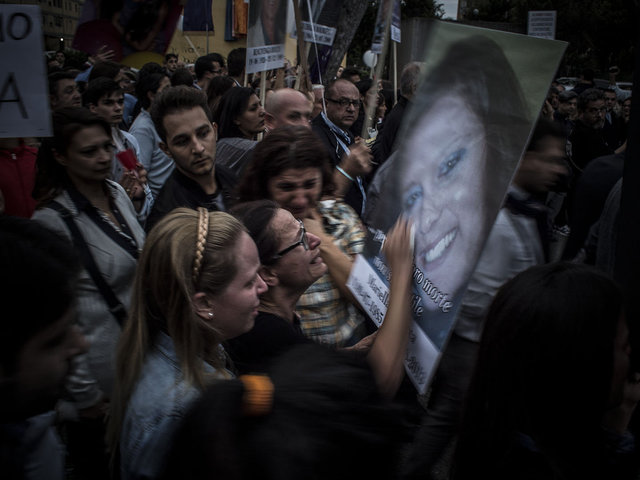
56.Marcia per La Vita Caivano
Una donna piange di fronte all'immagine di una familiare morta per cancro durante la marcia contro le ecomafie.
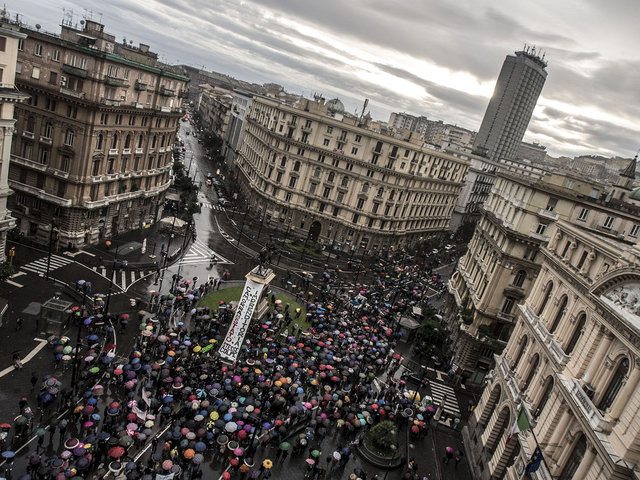
58_Manifestazione Stop Biocidio
Il 16 novembre 2013 almeno 100.000 persone scendono in piazza a Napoli per dire stop al biocidio campano
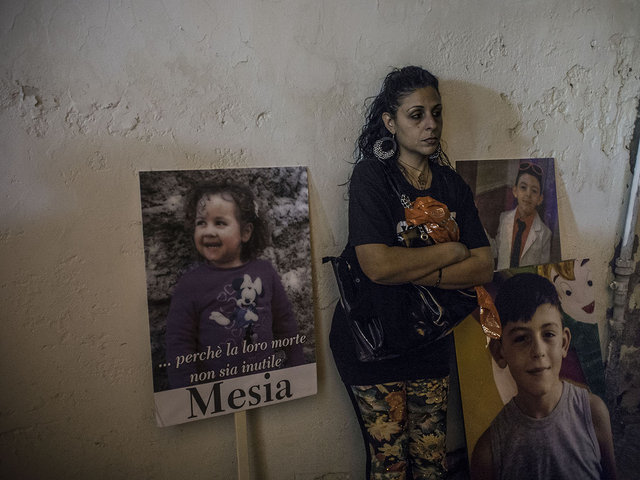
60_ Antonella
Antonella, la mamma di Francesco, morto per una rara forma di cancro, alla fine di una manifestazione contro il biocidi o accanto alla foto del figlio e di un'altra bambina morta per cancro.
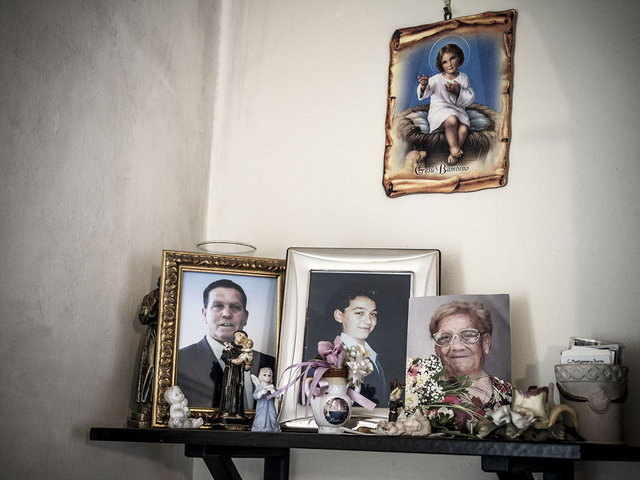
61_
Un piccolo altare nella casa di Maria, la mamma di Francesco, morto per una rara forma di cancro all'età di 12 anni eritratto in una delle foto accanto ai nonni, anche essi morti per cancro.
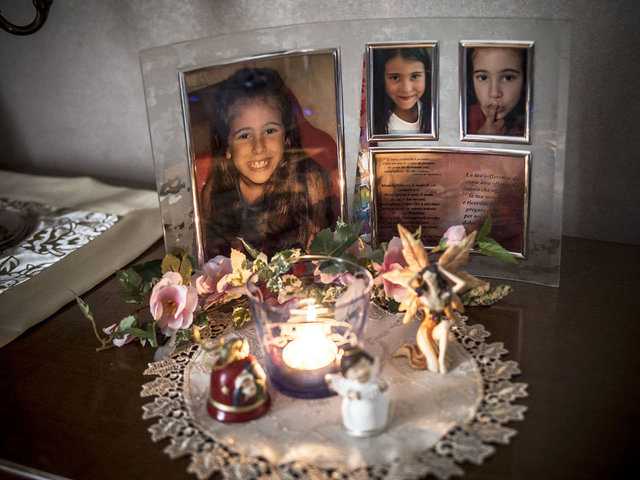
63_ Alessia
Un piccolo altare dedicato ad Alessia nella casa della mamma

64
Un piccolo altare nella casa di Maria, la mamma di Francesco, morto per una rara forma di cancro all'età di 12 anni.
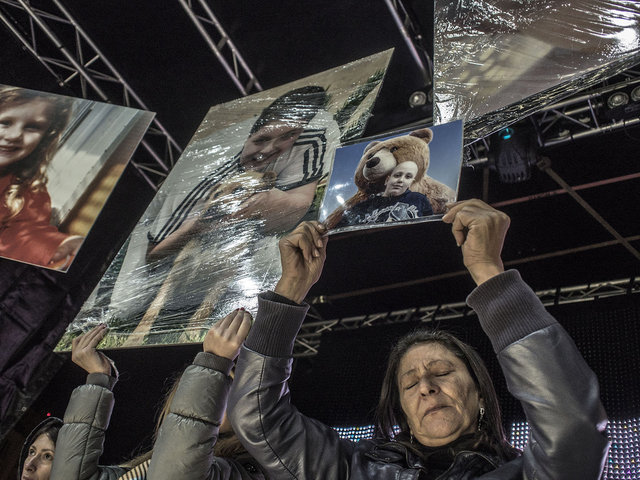
65.Manifestazione stop Biocidio
Le mamme dei bambini morti per cancro e leucemia nella Terra dei Fuochi manifestano in una delle tante giornate dedicate alla mobilitazione contro il biocidio campano.
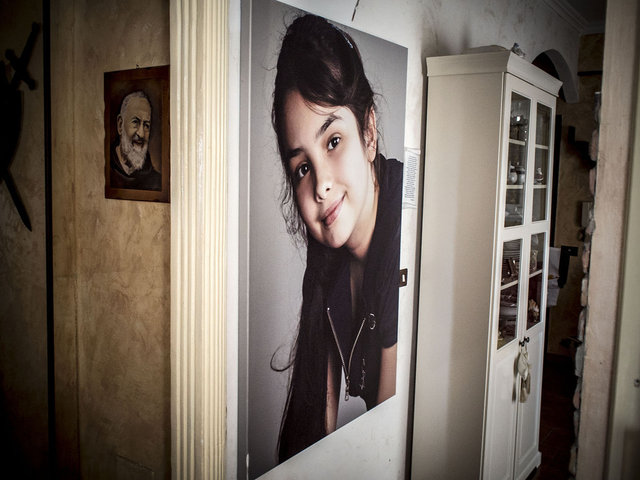
66
Una gigantografia di Dalia, morta a 13 anni di cancro, nella casa dei genitori.
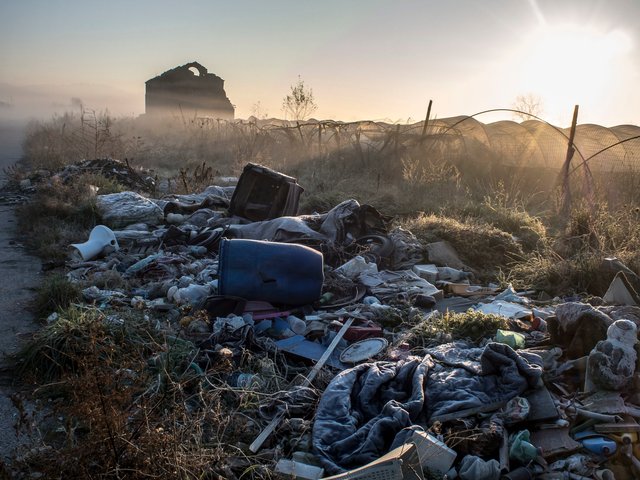
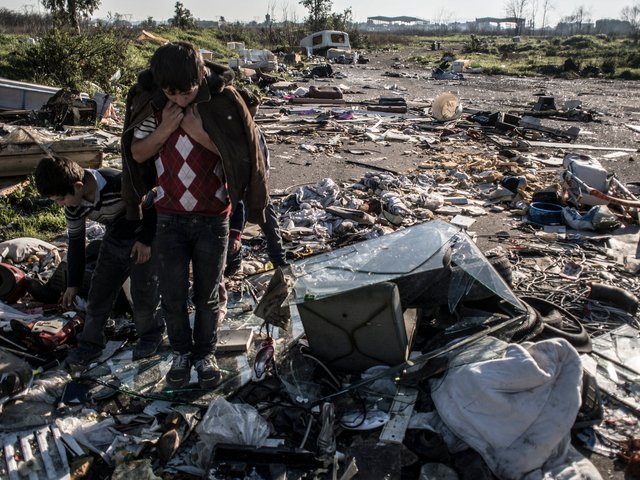
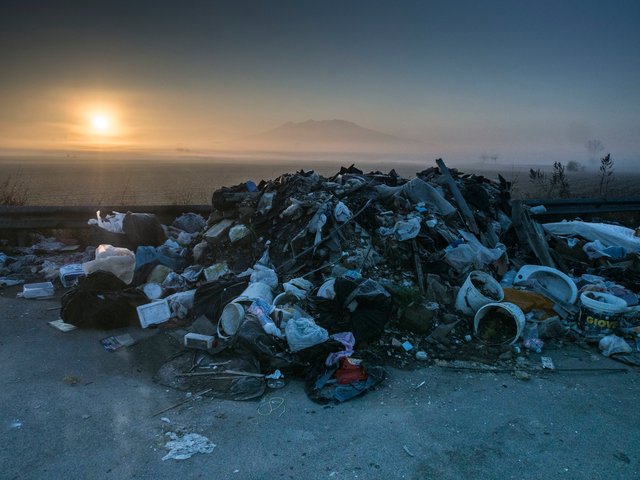
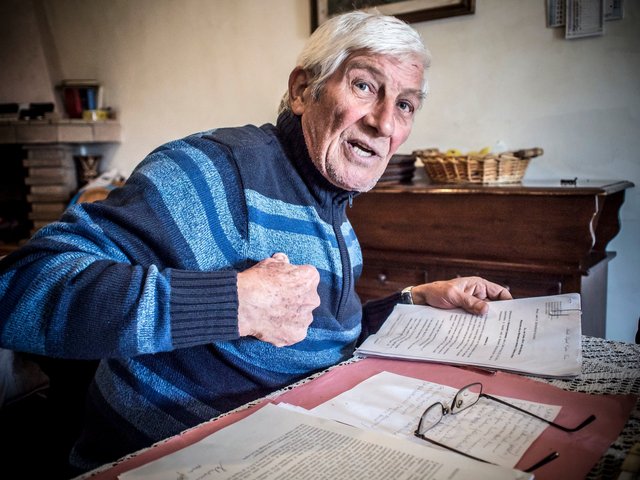
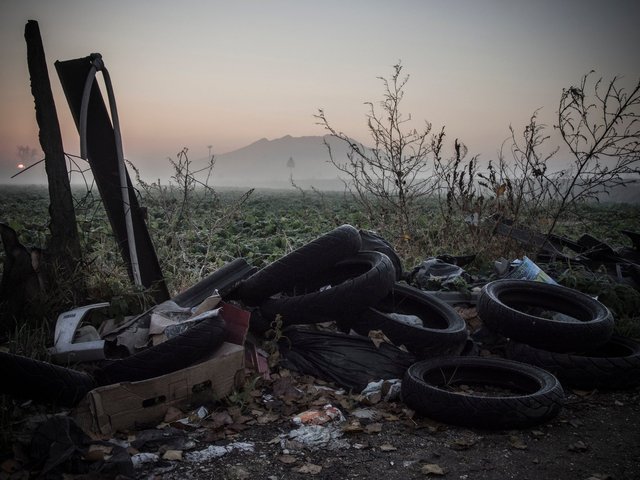
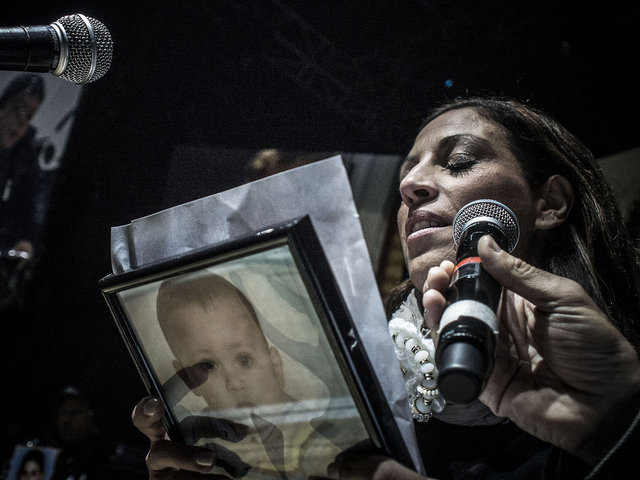

Terra dei Fuochi_8
Antonella, una mamma che ha perso il figlio a causa del cancro nella Terra dei Fuochi, sul reparto di oncologia pediatrica del Pausillipon di Napoli mentre fa visita ad altri bambini.
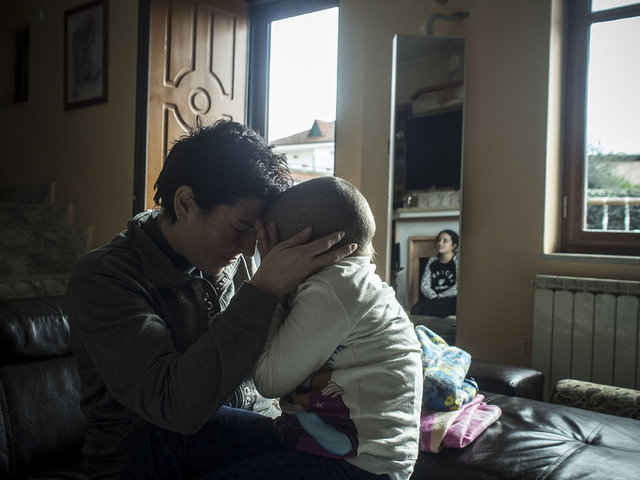
Terra dei Fuochi_9
Rita con la figlia Giada, ammalata di Leucemia nella loro casa di Giugliano, uno dei comuni del napoletano dove ci sono le discariche tossiche tra le più pericolose della cosiddetta Terra dei Fuochi.
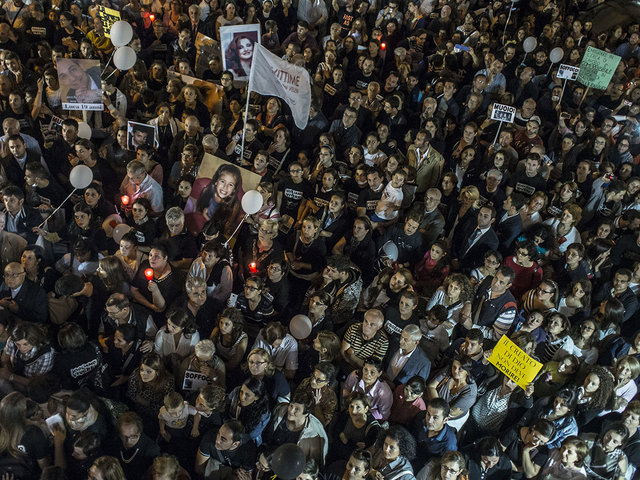
Terra dei Fuochi_5
Una delle prime manifestazioni organizzate dalla diocesi di Aversa contro il fenomeno della cosiddetta Terra dei Fuochi

Terra dei Fuochi_6
Due preti di Ercolano, in provincia di Napoli nel parco nazionale del Vesuvio dove un parrocchiano ha rivelato in confessione che erano seppelliti decine di fusti tossici.